© copyright stannes4/2000
Page 1
March 23rd, 2003
3rd Sunday of Lent


|
Schedule of Masses Week of March 24th - March 29th, 2003 |
|||
|
Day |
Time |
Requested for |
Requested by |
|
Mon March 24th |
7 A.M. |
For the People of the Parish |
|
|
9A.M. |
Amelia Esposito |
Anna DiLella |
|
|
Tues March 25th |
7 A.M. |
Evelyn Napolitano |
Romano Family |
|
|
9 A.M. |
Socorro A. Kennedy |
Ronald Lenahan |
|
Wed March 26th |
7A.M. |
Julia Jensen |
Maria Jensen |
|
|
9A.M. |
Mary Koska |
Albert Koska |
|
7 P.M. |
Joseph Romano |
Romano Family |
|
|
Thurs March 27th |
7A.M. |
Joseph Kane |
Kane Family |
|
|
9A.M. |
Maria DiSalvo |
Manzo Family |
Fri. March 28th |
7A.M. |
Millie Ambrosio |
Rose Capparelli |
|
|
9A.M. |
Anna Slivka |
Mary Fisher |
Sat. March 29th |
9 A.M. |
Concetta Pallante |
Maria Russo |
|
6 P.M. |
Concetta Pallante |
Nicastro Family | |
|
7:30PM |
Amelia Esposito |
Caterina Russo | |
|
Sun. March 30th |
7:30AM |
Luisa Altomonte | Daughters Agnes & Josie |
| 9 AM | Socorro Kennedy | Linda & Shirley | |
|
10:30AM |
John Neumann Sr. | Neumann Family | |
|
12 PM |
Antonia DeJesus | Rodriguez Family | |
|
Sanctuary Gifts March 23rd - March 29th, 2003 |
||
|
Gift |
In Memory Of |
Requested By |
|
Altar Wine |
Julia Jensen |
Jensen Family |
|
Altar Bread |
John Hollingsworth |
Rita Rinyak |
|
Sanctuary Lamp |
John Clifford |
Doris Hollingsworth |
|
Altar Candles |
Elizabeth Krohn |
Grace & Mark Jersey |
Let Us
Pray For Those Seriously Ill
![]() John
Brawer, Joan Wheeler, Angela
Krajnik, Cecilio Villanueva, James McGrath
John
Brawer, Joan Wheeler, Angela
Krajnik, Cecilio Villanueva, James McGrath
Vocation reflections
 The
Samaritan woman testified to what she had seen and experienced in the person of
Jesus. Through her testimony others came to believe and know for
themselves that Jesus truly is the Savior of the world. Are you willing to
testify on behalf of Jesus today? Do you wish to lead others to faith?
Will you do this as a priest, deacon or religious sister or brother?
The
Samaritan woman testified to what she had seen and experienced in the person of
Jesus. Through her testimony others came to believe and know for
themselves that Jesus truly is the Savior of the world. Are you willing to
testify on behalf of Jesus today? Do you wish to lead others to faith?
Will you do this as a priest, deacon or religious sister or brother?
If you feel this call, “inquire within” and Please contact the Vocations Office the Vocations Office at (973) 497-4365 or by E-mail at kellyric@rcan.org. Or visit our web site at www.rcan.org.
![]()
Page 2 Top
STEWARDSHIP
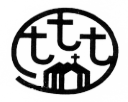
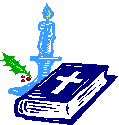
STEWARDSHIP
SCRIPTURE REFLECTION
The law
liberates and leads us to freedom. It
is to be trusted for it is a source of wisdom.
Jesus speaks of the ultimate freedom to be won for us by his being raised
up. He is the sign of the power and
wisdom of God.
Our Weekly Offering
March 2003
March 15/16 $ 5,941.
Month’s Total $ 17,173.
Month’s Average $ 5,724.
Mailed in, thank you
$ 245.
![]()
MONTHLY AVERAGE COMPARISONS:
Month ‘01 Monthly Avg.
‘03 Monthly Avg.
February $5,841.
$5,213.
March $6,230.
![]()
![]()
![]()
![]()
HOLY
HOUR FOR PRIESTS

Every Tuesday the Blessed Sacrament is exposed in the church from 3 to 4 p.m. It is an hour of prayer for the priests, DIVINE MERCY and religious men and women of the church. Prayers are also said for an increase of vocations to the priesthood and religious life.
We invite you to come and spend time with the Lord for these intentions and for your personal requests. The Holy Hour closes with Benediction of the Blessed Sacrament. If you cannot join us in church, we ask you to join us from a quiet spot in your home and pray with us, asking the Lord to guide and protect our priests.
![]()
![]()
![]()
![]()
Stations of the CrossDuring the Lenten Season, there will be Stations of the Cross in Church on Fridays at 1 p.m. and 7 p.m. beginning March 7th and ending April 11th.
|
Easter Flowers

For your convenience, a
“Flower” depository has been placed in the front of church next to the
altar. While beautifying the church
for the Easter Season through the generosity of your donation, you will also be
remembering your loved ones. On
Easter Sunday in the church vestibule, there will be a “donor” list
displayed. If you wish to have your
loved ones listed, kindly drop
off your flower envelope by April 13th.
Easter Confession ScheduleSat., April 12th 1-2 p.m. & 4:30-5:30 p.m. Mon., April 14th 4-4:30 p.m. & 7-7:30 p.m. Tues., April 15th 4-4:30 p.m. Wed., April 16th 4-4:30 p.m. & 7-7:30 p.m. NO CONFESSIONS ARE SCHEDULED DURING THE TRIDUUM.
|
page 3
|
READINGS FOR THE WEEK |
MONDAY 2Kgs 5:1-15b Ps 42:2-3;43:3-4 Lk 4:24-30
TUES. Is 7:10-14;8:10 Ps 40:7-11 Heb 10:4-10 Lk 1:26-38
WED. Dt 4:1,5-9 Ps 147:12-13,15-16, 19-20 Mt 5:17-19
THURS.
Jer 7:23-28 Ps 95:1-2,6-9 Lk 11:14-23
FRIDAY Hos 14:2-10 Ps 81:6c-11b,14,17 Mk 12:28b-34
SATURDAY Hos 6:1-6 Ps 51:3-4,18-21b Lk 18:9-14
NEXT
SUNDAY - 4TH SUNDAY OF LENT
2Chr 36:14-16,19-23 Ps 137:1-6 Eph 2:4-10 Jn 3:14-21

Home & Garden Party
St. Anne’s Rosary Society will be hosting a “Home & Garden Party” on Tuesday, April 1st at 7 p.m. in the auditorium. Candles, floral arrangements, frames, dinnerware, etc. are just a few of the items available for purchase. Please join us...all are welcome. Coffee and cake will be served.
![]()
![]()
![]()
![]()
![]()
Cake Sale/Flea Market
St. Anne’s Rosary Society will be holding its annual Cake Sale/Flea Market on Saturday and Sunday, April 12 & 13th following all Masses. Please support their fundraiser by stopping by after Mass for a sweet treat, roll, or just a cup of coffee. Don’t forget to browse their flea market tables for super bargains. Looking forward to seeing you there!
![]()
![]()
![]()
CCD News
· Concert for First Penance today at 3:30 p.m. in church. Children and parents are to attend. Friends and relatives are invited.
· Practice for Last Supper Presentation today from 11-12:30 in Chapel Hall if they are going to be part of this presentation. Children from CCD will be dismissed at 12:30 - if not in Presentation 11:30. Catholic School children are to come to Chapel Hall at 11 a.m.-12:30.
· Confirmation classes in session every Thursday from 6:30-8 p.m. Parents, please make sure your child comes to class. Do not make any appointments on Thursday.
· March 30th - Grades 6 and 7 will attend the Lenten Reflection in church at 3 p.m. Candidates, parents and sponsors must attend. All parishioners are invited.
· We congratulate all children who have made their First Reconciliation on Saturday. We thank all teachers who have prepared them for this Sacrament. We also thank all parents for their cooperation in the preparation process in working with their child.
· Contact Sister Alberta in the CCD Office at 201-659-1794 or at the Convent 201-963-0998 if you’re interested in the Villa Roma trip June 22nd-27th, 5 nights/6 days. Price includes: hotel accommodations, meals, activities, night entertainment, tips, tax and transportation - Adults: $540 + $40 transportation; Children up to 3 yrs. are free; 4 to 10 $150 + $40 transportation; 11 to 17 $175 + $40 transportation. If you are planning to make this trip, please sign up as they need to book rooms. If you can’t pay right now, it will be due by end of April.
Consecration Celebration
Please plan to come Tuesday, March 25th at 7 p.m. to St. Paul of the Cross. Consecrate your heart to Jesus through the Immaculate Heart of Mary and pray for the special intention of Our Holy Father, World Peace. Holy Mass will follow a Procession, Crowning, Recitation of the Rosary, and Consecration Prayers. Deacon Bob Baker will be our homilist and music will be by Gerry Osias with the St. Paul of the Cross choir.
Top page 4
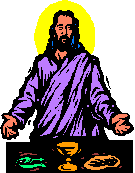
When
the hour came, he took his place at table with the apostles. He said to them,
“I have eagerly desired to eat this Passover with you before I suffer, for, I
tell you, I shall not eat it (again) until there is fulfillment in the kingdom
of God.” Luke 22:14-16
St.
Anne’s Celebration of an Authentic Passover Meal from 33 A.D. with Christ
Centered Overtones. We are using
the meal Jesus Celebrated the night before he Died to understand the
Eucharistic Celebration of Today and the Meaning of Holy Week. Through this
Celebration we will trace our roots to help us understand what John meant when
he said
“Behold the Lamb of God.”
St.
Anne’s Parish Family Celebrates our Heritage
INTRODUCTION
The
Event which has been prepared for you this evening is one which we believe
closely resembles the final Passover which Jesus and his family celebrated
together. The Last Supper, as we have come to know it, was conducted according
to Jewish Law in the city of Jerusalem during the time of the Second Temple.
The
Temple was a focal point for the Festival of Passover because the Paschal Lamb
of each family had to be sacrificed at the altar of the Temple. Three male
members of the household would have brought the lamb to the Temple for
sacrifice. The lamb would have been returned home to be roasted and then eaten
at the Passover.
In 70 CE the Temple was
destroyed by the Romans. Since that time the Passover Seder has changed. Many
Jewish communities no longer eat the roasted lamb because it cannot be
sacrificed and prepared according to the Law. The definition of chametz (wheat,
barley, rye, and oats) has been extended to include items like legumes and rice.
The roasted egg which now appears on the
Seder plate was added as a symbol of mourning for the loss of the First Temple,
destroyed by the Babylonians in 586 BCE, and the loss of the Second Temple
destroyed by the Romans in 70 CE.
Passages
from the modern Haggadah or Passover Prayer book, which refer to the return to
Jerusalem and the fall of the Temple have been eliminated for our purposes
tonight, but these are important components of the modern Seder.
Passover
was the most important and the most popular feast of the year for first-century
Jews. It remains so throughout the centuries and is still important and popular
today. While the Temple was still standing, Jerusalem a city that ranged in
population between 30,000-80,000, would balloon in size as hundreds of thousands
of pilgrims arrived from all over the known world for Passover was a pilgrimage
feast. For all who could make the journey it was to be celebrated in Jerusalem.
Passover was already an ancient feast by the first century. It is probably
history's oldest continuous
feast.
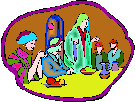
Remember
that the first generation of Christ followers were Jewish with only a sprinkling
of gentiles since Samaritans . It was in the context of the Passover meal that
they came to understand their identity. The early breaking of the bread or agape
meal was modeled after the Jewish Passover meal.
Without
a clear understanding of all that Passover means, we, as Christians, cannot
appreciate what we mean when we proclaim that Jesus is the Lamb of God (Gospel
of John) or what St. Paul meant when he proclaimed that Jesus was a Passover
sacrifice. With renewed appreciation of Passover’s symbolism and essence, we,
as Christians, can better appreciate our
Eucharist, our holy communion and our celebration of the Lord’s Supper which
is the reutilization of the Last Supper.
The Hebrew word
“zikkaron” which was brought into Greek as “anamnesis” and finally into
English as “memory” literally means, commemoration, celebration,
remembrance, memorial. Technically it meant the bringing of past events into the
present so as to participate in them. The Passover meal was “zikkaron”.
“In every generation a man is bound to regard himself as though he personally
had gone forth from Egypt.” (BT Pesachim) This would be the meaning that Jesus
would have in mind when he gifted us the Eucharist.
By
celebrating this event tonight, we hope to help you bring the past into the
present so as to participate in it.
COMPONENTS
OF THE SEDER
ì Lighting
the candles:
A
blessing is recited and then the candles are lit. The mother or the mistress of
the house would perform this
blessing.
ì Blessing
the wine:
A
blessing is recited before drinking. During the Seder, four cups of wine are
consumed. The father or male member of the house would perform this blessing.
ì Washing
of hands:
The
hands are washed twice in the seder, once before dipping the vegetable in salt
water, and once before the meal. It was customary for a pitcher to be carried
around the table and water poured over the hands of each participant. This
activity would have been performed by at least two women, one to carry the water
pitcher and the other to hold the basin. This activity would have been carried
out by daughters or perhaps servants.
ì Afikoman:
During
the Seder, three matzot are used, two representing the two loaves of bread that
were placed in the Jerusalem Temple on festival days, plus an additional one for
Passover. They are stacked together and placed in a special bag or covered with
a special cloth. The middle matzah is broken in half during the ritual and set
aside for after the meal as a dessert, this is called the afikoman.
ì Cup
of Elijah:
Elijah
was a great prophet and the conscience of Israel in the days of King Ahab and
Queen Jezebel. According to tradition, Elijah did not die but ascended to heaven
in a chariot. His return has been anticipated by generations of Jews ever since.
The cup of wine on the Seder table symbolizes that Elijah would be a welcomed
guest at every Seder. When the cup is poured the door is opened and then closed.
The opening and closing would have been done by one of the children.
Seder
plate:
ì Lamb
Bone
Lamb
Bone-a reminder of “the mighty arm” of God, which encouraged the Pharaoh to
release the Children of Israel. It is also symbolic of the Paschal offering.
ì Maror
(Bitter Herb)
a
symbol of the bitter lot of the Israelites during their enslavement in Egypt.
Today we use horseradish but many different bitter herbs have been used.
ì Charoset
Top page 6
a symbol of the mortar and
bricks the Israelites were forced to make for their taskmasters. It is
traditionally made of apples nuts and red wine.
ì Karpas
(Parsley)
it
is dipped into salt water and eaten at the beginning of the seder. The parsley
is the fruit of the earth and the salt water represents the tears of the people.
ì Chazerit
a
second bitter herb or vegetable is added to the plate because the Torah says
“They shall eat it (the Paschal Lamb) with unleavened bread( matzot) and
bitter herbs, the plural meaning the maror and another bitter.
ì Baytza
(Roasted Egg)-
a
symbol of mourning for the loss of the First Temple, destroyed by the
Babylonians in 586B.C.E, and the loss of the Second Temple destroyed by the
Romans in 70C.E. With the Temple destroyed, sacrifices could no longer be
offered. The egg symbolizes this loss and has become the food of mourners.
ì Wine:
Traditionally
two cups of wine are served at Sabbath and Festival meals. One is served at
the beginning of the meal, after the blessing;
and the second is served at the end of the meal, after grace. Since Passover,
the Festival of Freedom, is so joyous and memorable a holiday, two additional
cups of wine are served. One of these additional cups is served after the
Haggadah or story has been recited (immediately before the meal is served) and
the other additional cup is consumed at the conclusion of the service, just
before the closing songs and hymns are sung. The cups are representative of the
four promises of the Passover, Book of Exodus.
1.
I will bring you out of Egypt.
2.
I will deliver you from their bondage.
3.
I will redeem you with an outstretched arm.
4.
I will take you to Me for a people.
ì Matzot:
Referred to as unleavened
bread. During the Passover Season it is eaten exclusively : “They took up
their dough before it had time to leaven” (Exodus) “For seven days
thereafter you shall eat unleavened bread…for you departed from the land of
Egypt hurriedly…so that you may remember the day of your departure from the
land of Egypt as long as you live” (Deuteronomy).
ì Seder:
Refers to the order in
which the Passover story is told.
ì Nations:
Refers to all other peoples
of the known world who worshipped idols and other gods.
Our
Passover: As seen through the eyes of the Early Church
W "Do
not think that I have come to abolish the law or the prophets. I have come not
to abolish but to fulfill. [Mat 5:17]
Luke
clearly identifies the last supper of Jesus with the apostles as a Passover meal
that commemorated the deliverance of the Israelites from slavery in Egypt. Jesus
reinterprets the significance of the Passover by setting it in the context of
the kingdom of God (Luke 22:16). The “deliverance” associated with the
Passover finds its new meaning in the blood that will be shed (Luke 22:20)
W Lighting
the candles:
A blessing is recited and
then the candles are lit. The Easter Antiphon “Christ our Light.”
W Blessing
the wine:
A blessing is recited
before drinking. The wedding feast of Cana. The abundance of wine in the
Messianic times.
W Washing
of hands:
This ritual act set the
Host apart as the most important Passover guest. Here Jesus washed the apostle's
feet instead. His action showed that we are called to serve. As a church we are
a servant people. In John Gospel this is a “zikkaron”
W Afikoman:
During
the Seder three matzot are used, Father, Son, and Holy Spirit. The middle matzah,
Jesus, is broken in half and set aside. The breaking, wrapping, and
“burying” (or hiding) the middle matzah in the matzah cover represented the
death and burial of Jesus and they
Top Page 7
could not find him. He was
not there. The finding represent the resurrection.
W Cup
of Elijah:
Jesus states Elijah had
come in John the Baptist. This cup with the afikoman began the agape meal.
Symbols of table fellowship and fraternal Love.
Seder plate:
W Lamb
Bone
Behold
the Lamb of God who takes away the sins of the World. Happy are we who are
called to his supper.
W Maror
(Bitter Herb)
The Bitter lot of our lives
when we are in the Slavery of Sin
W Charoset
The brick walls still built
when we are slaves to our sins.
W Karpas
(Parsley)
The green of spring and the
new hope that is offer by Christ who wipes away the tears of the people, the
tears that are caused by sin.
W Chazerit
is the point in the
Passover service when Jesus gave the sop to Judas, who then left. Judas never
ate the Passover lamb, or entered into the new covenant.
W Baytza
(Roasted Egg)-
The first generation
Christians mourned the loss of the Temple. But as they came to see themselves as
temples of the Holy Spirit, the loss diminished and the egg became a symbol of
new life or Easter.
W Wine:
Third Cup or 'Cup of Redemption'.
25
In the same way also the
cup, after supper, saying, “This cup is the new covenant in my blood. Do this,
as often as you drink it, in remembrance of me.”
26 For
as often as you eat this bread and drink the cup, you proclaim the death of the
Lord until he comes.
1 Cor. 11:25-26
W Matzot:
23
For I received from the Lord what I also handed on to you, that the Lord Jesus,
on the night he was handed over, took bread, 24 and, after he had given thanks,
broke it and said, “This is my body that is for you. Do this in remembrance of
me.”
1 Cor. 11:23-24
Page 8 Top
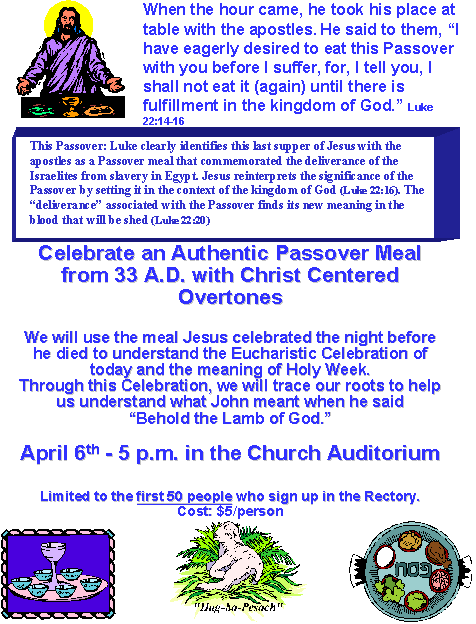
Page 9 Top
Our Web Site
When you log
on and browse around you’ll see all kinds of information about our parish.
Included, of course, will be the current activities for the many different
organizations as well as an update as to what is going on with our parish
family.
Do not let evil defeat you: Instead,
conquer evil with good!!
By your wounded heart: teach us love, teach us love, teach us love..... -Daphne Fraser
Saint
Anne’s 100th Anniversary News Update
Step By
Step…
Block By
Block…
As this bulletin goes to press, the Centennial Fund has a total of $12,000. Our goal is to collect $100,000. in 100 days (March 5-June 13). The money will be used to prepare our parish auditorium for the Centennial festivities (new floor, stage area, painting, restrooms, etc).
Thanks to all who generously responded during the first 10 days of the drive. We’re off to a great start.
“May the Faith we share continue to grow.”
![]()
